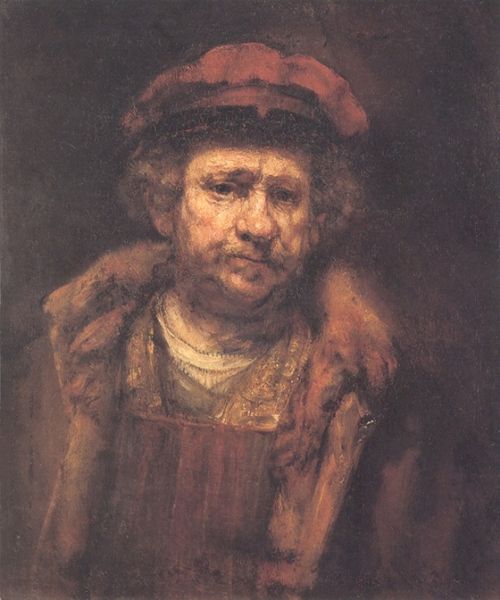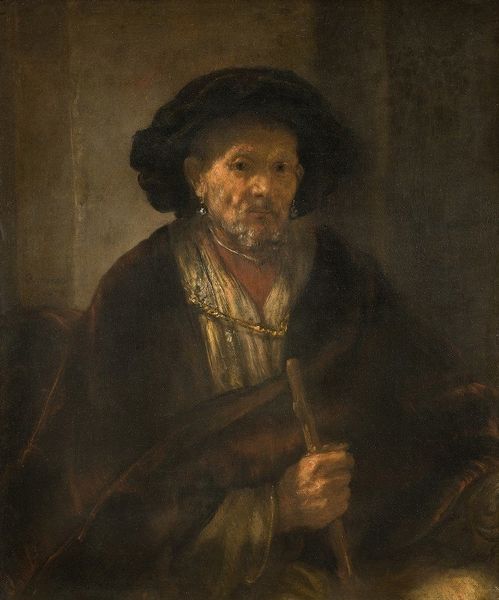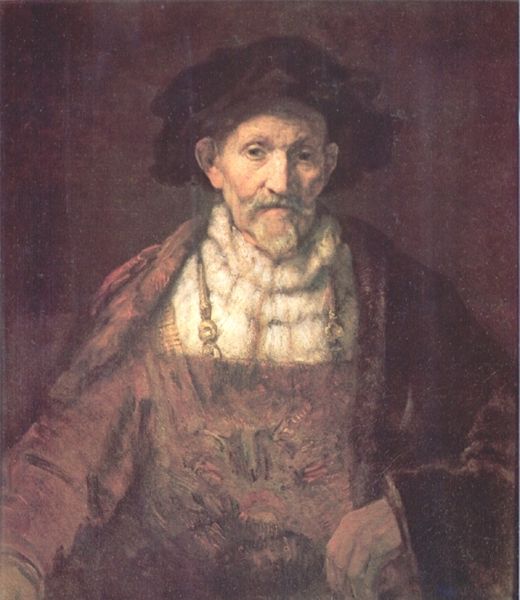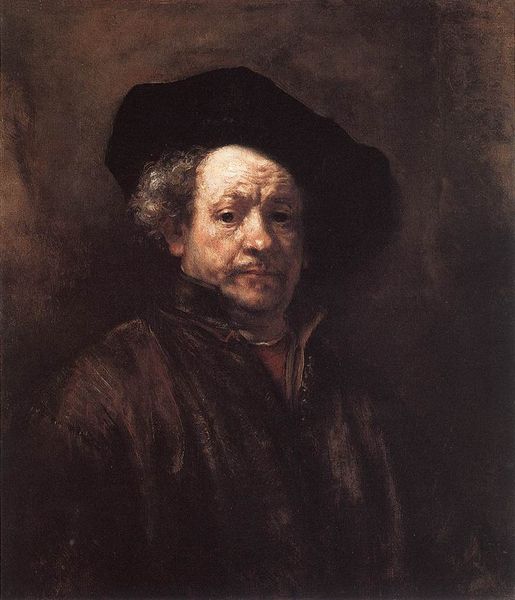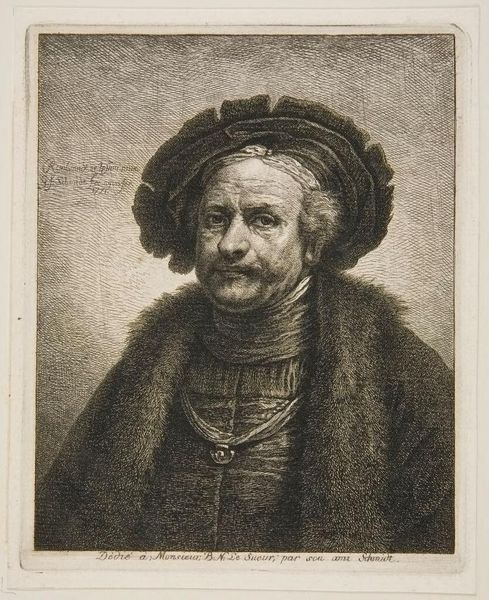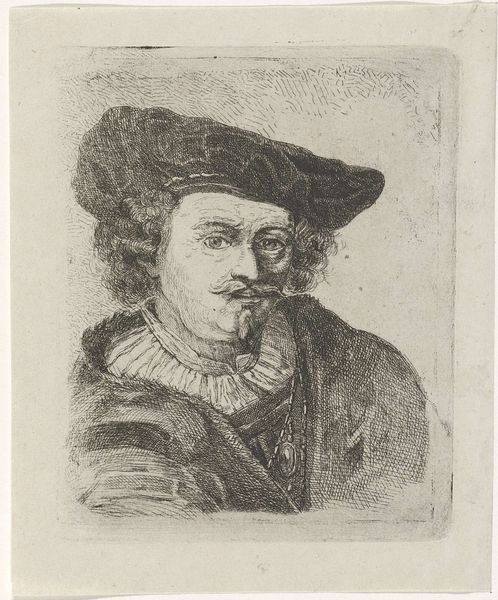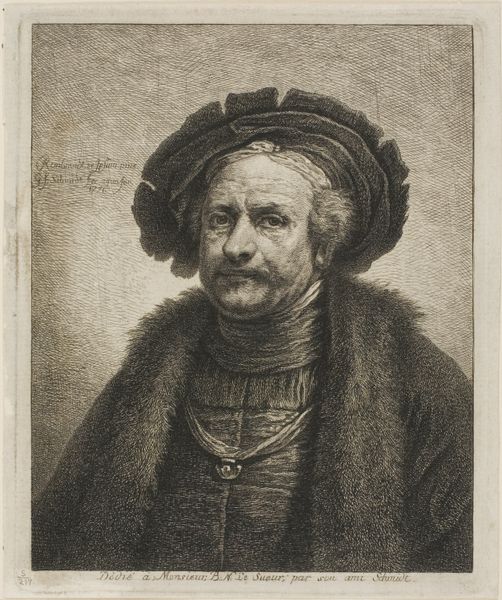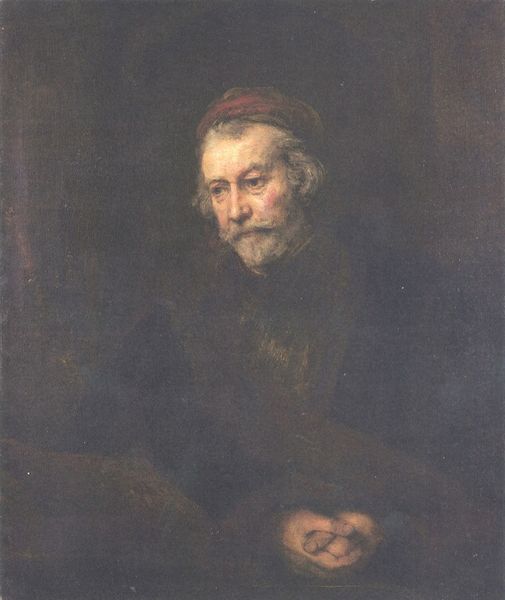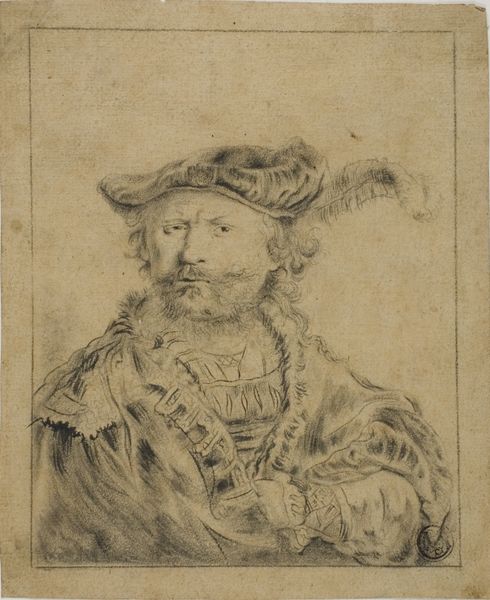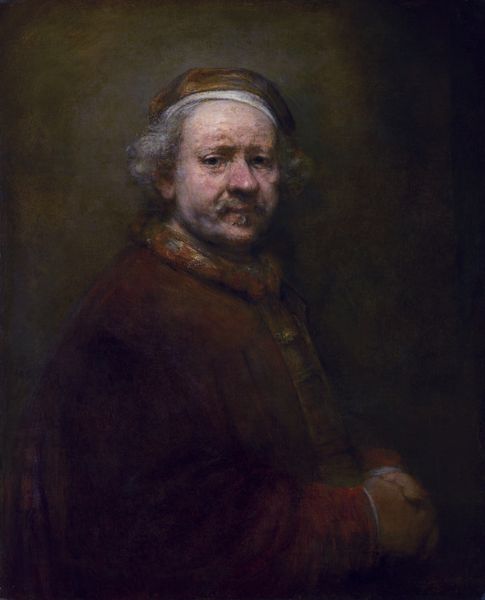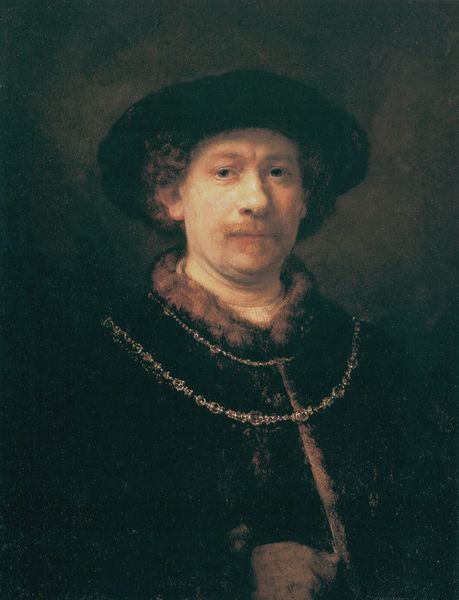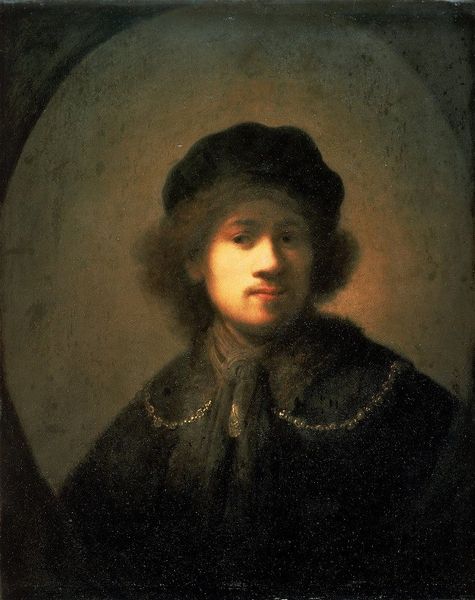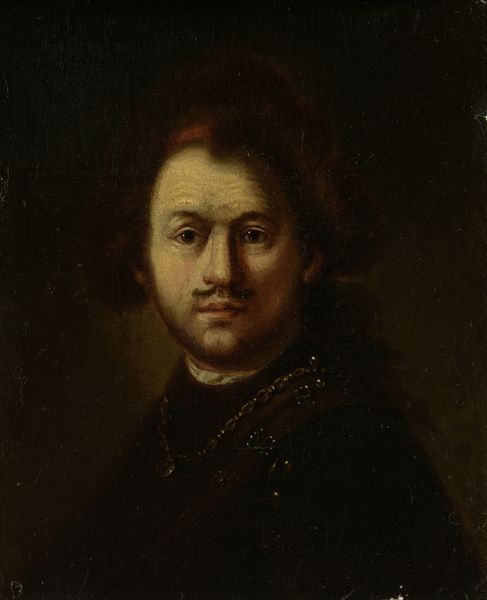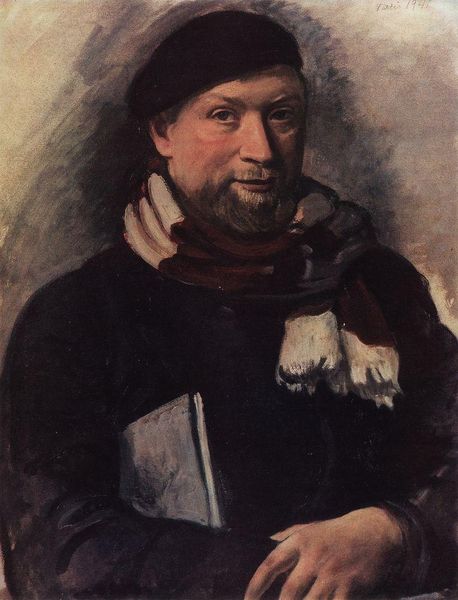
painting, oil-paint
#
portrait
#
self-portrait
#
baroque
#
dutch-golden-age
#
painting
#
oil-paint
#
chiaroscuro
#
realism
Copyright: Public domain
Curator: Rembrandt's "Self-portrait" from 1669, oil on canvas, currently at the Uffizi, presents us with a powerful image. Editor: Indeed. Looking at this painting, one immediately notices the palpable texture. There's something raw and unfiltered about it. How do you approach a piece so heavily invested in materiality? Curator: From a materialist perspective, it's vital to consider the physical process: the grinding of pigments, the mixing of oils, and the layering upon layering that creates that very texture you noticed. Ask yourself, what kind of labor was involved in creating this effect? Editor: So, the thickness of the paint itself becomes meaningful. It's not just about representing Rembrandt; it's about the sheer amount of effort, time, and materials he invested. Curator: Precisely. Furthermore, the chiaroscuro, that dramatic contrast between light and shadow, showcases Rembrandt's mastery, not just artistically, but in manipulating the very properties of oil paint. The build-up of impasto in the highlighted areas almost feels sculptural, doesn’t it? Editor: It really does. I hadn't considered that the 'sculptural' effect isn't just visual trickery. I’m now seeing how Rembrandt elevates his craft through the use of materials. Do you see any evidence that speaks to art world structures in the Golden Age of Dutch Painting? Curator: Definitely, think about the art market of the time, the patronage system. Rembrandt, later in life, faced financial struggles; a stark contrast to the celebrated master we know now. His approach to his craft – documented through numerous self-portraits – reflects the tension between artistic vision and economic realities. His style challenges the boundaries of wealth, consumerism, and labor through its innovative depiction. Editor: That really brings another dimension to my viewing. Looking closely, seeing those layered brushstrokes, knowing the material realities, connects me to Rembrandt and 17th-century Holland in a very tangible way. Curator: Exactly! That’s materiality offering a lens to the labor, economy, and consumption involved in art history.
Comments
No comments
Be the first to comment and join the conversation on the ultimate creative platform.
